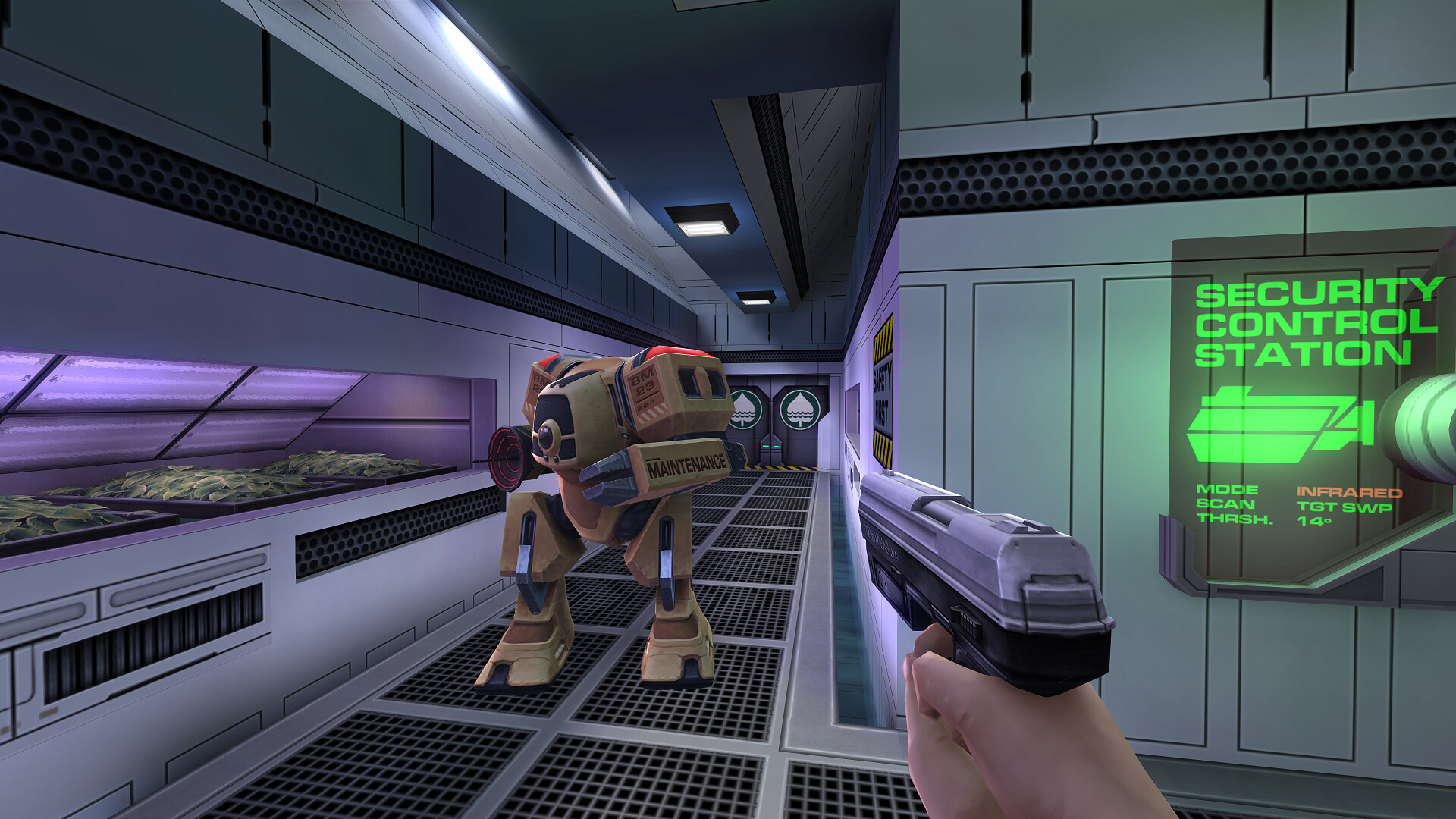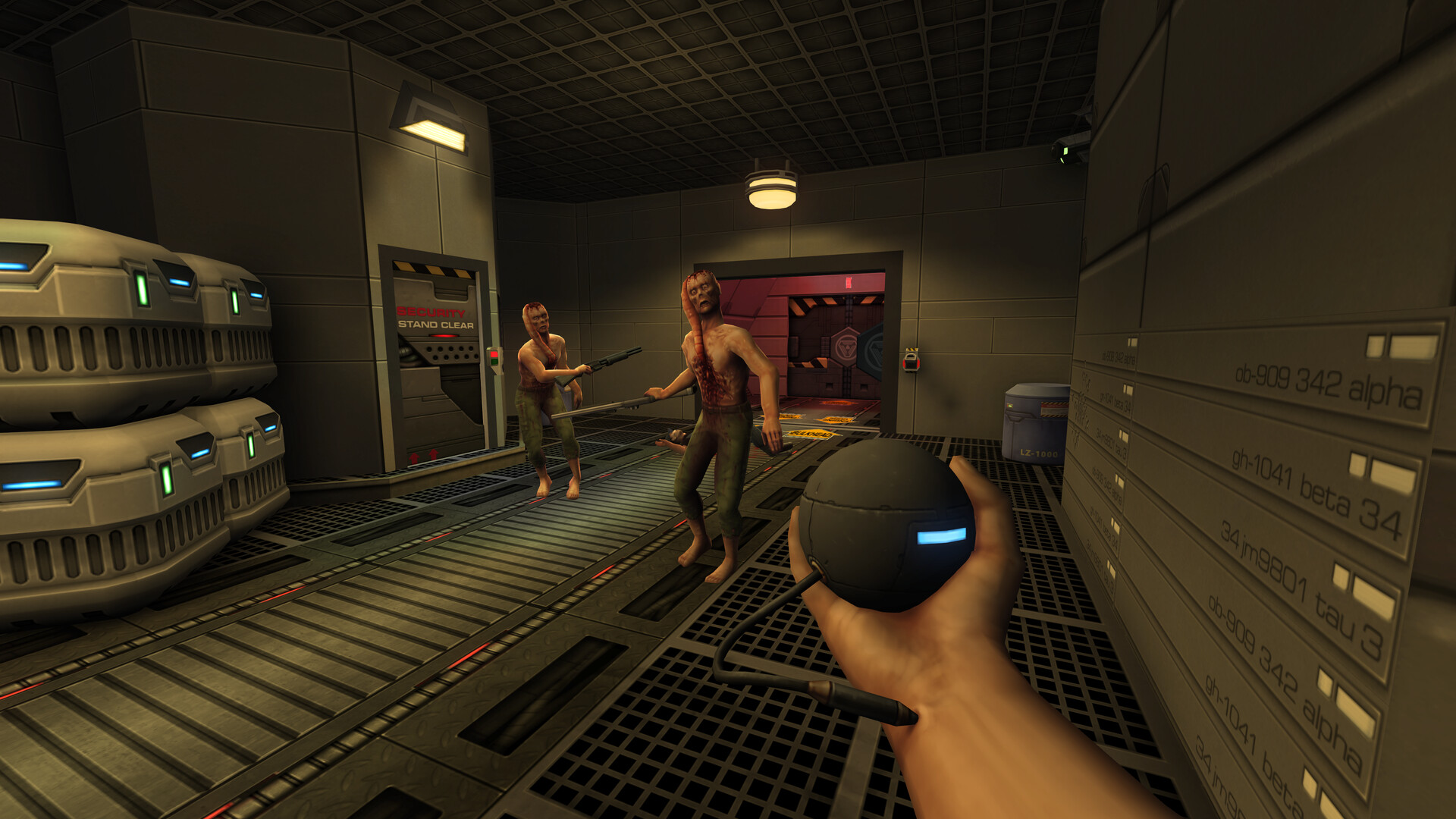System Shock 2: 25th Anniversary Remaster Review – Neuromancer
How do you begin to describe System Shock 2? Ahead of its time, revolutionary, a blueprint for several notable classics? Too easy. An incredible survival horror with masterful sound design, balancing silent moments with an ambient terror that keeps you alert? It’s slightly more complicated but warmer. One of the greatest games of all time, again and again? Very much so, even with its quirks, antiquities and downsides that a remake might have shaved off in the name of a frictionless experience.
Unlike Nightdive Studios’ remake of the first game, System Shock 2: 25th Anniversary Remaster is a lot closer to its inspiration’s aesthetic. It doesn’t channel the chilling and isolationist horror of the Von Braun with a new aesthetic so much as to enhance what’s already there, in effect showcasing what made the original so fantastic. It’s another feather in the developer’s cap, an excellent remaster, and well worth the trip, even if those older design choices may occasionally frustrate.
[embedded content]
“Knowing when and where to employ firearms isn’t even a question of frugality – it comes from knowing the different areas of the Von Braun. How its onboard computer XERXES will respond with automated security. How The Many will assail you, even with simple infected crew members (known as Hybrids) wielding pipes and shotguns.”
It’s 42 years after the disastrous events of the first game. The chance of rogue artificial intelligence attaining sentience (and suitably judging their human masters) is a worry of the past, thanks to the UNN. The original TriOptimum is gone, but a new owner has acquired its assets and licensed to create a faster-than-light ship, the Von Braun, to explore new horizons. It’s all well and good until they arrive on Tau Ceti V and become overrun by a parasitic life form that calls itself “The Many.” When you awaken from cryosleep, the FTL ship and the Rickenbacker, a UNN vessel piggybacking off the former, have effectively joined this hive mind.
You have amnesia upon exiting the cryotube, but your story doesn’t begin there. Instead, it starts with the character creation process, where you can learn the ins and outs of gunplay, traversal, repair, and inventory management. After deciding which unit to join – Marines for more straightforward gunplay, the Navy for hacking and repairing, and the OSA for psionics – you can embark on different “missions,” adding a little more color (and starting stats) to that military career.
From a narrative perspective, it’s not exactly the most thrilling, especially next to the first game’s Hacker and their predicament. Nevertheless, it gets the job done and offers a much better set-up for role-playing as your own character. You’re still effectively voiceless throughout and can only project your terror onto the protagonist, but it works well enough for what System Shock 2 wants to accomplish.
Because, like in every good role-playing game, no two choices are the same. Sure, you can invest in Strength for more inventory space and harder-hitting melees, which comes in handy with the wrench. Those Cyber Modules could also be invested into Standard Weapons to handle a handgun and shotgun, which will become essential for dealing with armored threats like security robots (but then again, there are other choices to circumvent them). Even repairing seems like a good idea, especially since weapon breakage is a thing, but you won’t really know how valuable Hacking can be until you step into the Von Braun. I opted for the Marines, embracing the firearms (and wrench-swinging) lifestyle, but the ammo isn’t infinite, even with Replicators that exchange Nanites for ammunition.
Knowing when and where to employ firearms isn’t even a question of frugality – it comes from knowing the different areas of the Von Braun. How its onboard computer XERXES will respond with automated security. How The Many will assail you, even with simple infected crew members (known as Hybrids) wielding pipes and shotguns. The original game’s developer, Looking Glass, designed System Shock 2 to serve as a dungeon crawler, albeit in space. However, there’s also a bit of Deus Ex thrown in as you hunt down keycards and access codes, backtracking to previously locked areas. It’s a testament to the excellent level design that these never felt tedious – even after venturing back to open up R&D and find another potential survivor, new threats emerged, keeping the tempo and pacing fresh.
“The Many’s voices also remain as haunting and chill-inducing as ever – one of the many highlights of the voice acting and sound design (outside of you-know-who). The audio logs also offer some decent performances, and though they’re serviceable at best, they work incredibly well at setting up the events leading to the Von Braun’s downfall.”
I was also surprised at how easy it was to get used to the movement, melee combat and gunplay, even with some janky hitboxes when wrench-whipping some monkeys. The weapon degradation is a bit of a mixed bag for me. I don’t outright hate it because there are avenues to mitigate the same (and the repair mini-game is a unique dot-connecting exercise) but having the shotgun break after about seven shots or so in the early going felt annoying. Nothing like the “click, click” sound with shells in the weapon and a combination of radiation and shotgun-wielding Hybrid to make my day.
Though starting fairly deprived, System Shock 2 offers several worthwhile avenues for power. An OS upgrade for more bullet damage is as worthwhile as one that provides resistance to radiation and toxin build-up. Psionics is a whole other area of expertise entirely with Pyrokinesis, Cryokinesis and even Soma Transference for leeching health off enemies, not to mention all the ways you can augment your character’s stats (including the reduction of weapon degradation). It could be something that every build dabbles in depending on their needs but remains challenging as a starter.
Investing Cyber Modules into stats, skills, and upgrades becomes gradually more expensive over time, and there’s no respec (past the little undo button before finalizing your choices). Don’t have enough Modules to use that cool new shotgun you’ve been lugging around? Better progress forward to get more (and not die). These locked-in choices can feel harsh if you invest in a build without knowing how to leverage it for all the challenges ahead, relying heavily on the wrench to get you through most encounters. However, the progression itself is smooth, steadily increasing your power while maintaining the survival horror experience.
And really, I can’t praise System Shock 2 enough for how it handles horror. It could be the sudden appearance of a Hybrid, which could be easy enough to deal without until you whiff the first swing and it gets some successful hits on you, never mind those with grenades. But even when you fully master their movesets, their appearance and cries to be released from The Many’s control remain unsettling and pitiful throughout.
The Many’s voices also remain as haunting and chill-inducing as ever – one of the many highlights of the voice acting and sound design (outside of you-know-who). The audio logs also offer some decent performances, and though they’re serviceable at best, they work incredibly well at setting up the events leading to the Von Braun’s downfall.
“As the intended experience, though, System Shock 2: 25th Anniversary Remaster is everything that made the original great – just better-looking and a smoother experience.”
So we’ve established that System Shock 2 is a phenomenal game, but what about Nightdive Studios’ work? Outside of the vault for viewing concept art and the early pitch, it’s done a pretty good job sprucing up the environments while maintaining the aesthetic. Textures are cleaner, and character models overhauled – the Hybrid doesn’t look as emaciated or desiccated as the original, but they’re still sharp. The UI’s readability and clarity are also great, especially with the overhauled item art.
Performance is also flawless at 1440p and 120 FPS. You only have options for enabling Ambient Occlusion and Bloom, adjusting the gamma and selecting the video driver, but the overall presentation and fidelity are very good. I didn’t really get a chance to jump into co-op, so if you’re picking it up to play with other people, maybe wait for more impressions to drop before jumping in.
As the intended experience, though, System Shock 2: 25th Anniversary Remaster is everything that made the original great – just better-looking and a smoother experience. Even if the likes of Prey or Deus Ex haven’t spoiled you, it’s a great way to appreciate how far the genre has come and a genuinely enthralling, terrifying and cerebral experience in its own right.
This game was reviewed on PC.




Comments are closed.